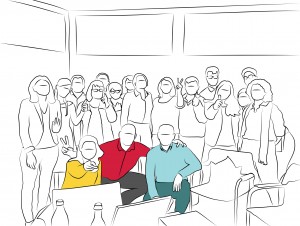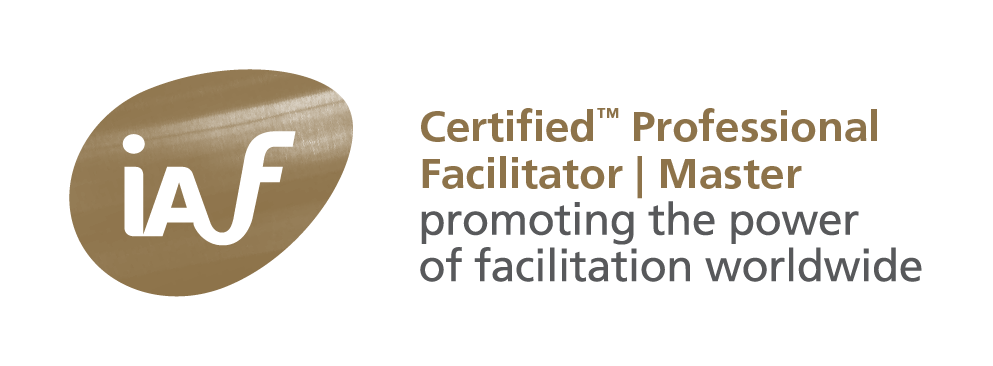On Linked-In Meeting Architects, I replied to a question on “What techniques do you use to boost participant engagement?”
This is NOT a technical issue, it is relational. Engagement is a paradox too: most participants feel a reluctance to participate.Engaging is about
- disclosure – What do you want to share about yourself? What do the others share?
- trust – How safe is it to share? What does the other really share?
- intimacy – How meaningful will this relationship be? Will the other be honest to me?
- regression – How I feel overwhelmed and small by the group.
(See Smith and Berg, Paradoxes of Group Life for more)
Need to participate
Participants “want” to contribute, to play (= regress) and at the same time need to know what they’ll get for. They want to speak out AND want to be heard. So, they (all) wait for each other, concluding – as a self-fulfilling prophecy – better not engage truly. They’ll “go through the motions”, but in the end, everybody will feel dissatisfied AND will not admit it (disclosure, remember). The facilitator will be blamed.
Energy boost?
In most cases, as a chair person or facilitator, we tend to put more energy into the meeting: “boosting participation”, creating an event, presenting things more clearly, using pictures, charts and video’s. Its not wrong, but it may back fire. People may become even more overpowered (more regressed: as a child listening to parents). They’ll feel less intimacy, because of the light, the pictures and the sounds. They’ll have more distrust, because, why do you need so much power? What is NOT being said and they’ll feel less heard themselves. Finally, almost every time, the obvious will be communicated, the clear, what must or shall be done. There’ll be no space for doubts, insecurities, real feelings. It will seem to be engaging, but in the end, nothing will change, no “happening”.
Free to participate
First of all, I assume that everybody wants to engage, and has to become engaged out of their own. As a host or facilitator, I’m not an entertainer, wanting you to be engage. And if you do not want to be engaged: fine with me. I value your presence. The fact that you honor us with your presence, energy, attention and time, is good enough. So, I do you use the techniques – ice breaker, splitting up as soon as possible, polling and presenting (and some more) -, and at the same time with the intentions to stimulate what the participant needs: trusting the situation to be safe enough to regress, share, feel close together.
Show it; fake it, if you must
The best way to this, in my opinion, is to show this behavior yourself, preferably together with your client. You share your own feelings and thoughts, are not afraid to make errors or mistakes, talk about your doubts and insecurities.For instance, play on stage, have an interview, let the participants ask questions. Then you spit them up in mixed groups, let them talk about what they’ve just experienced, have them create how they “see” the problem. Then – after a break – let them build their solution(s), share and formulate actions they themselves can do.
Most client try to shift the burden of engagement to the event organizer. I don’t fall into that trap: the client remains responsible for the engagement of the participants. We’re there to support.





